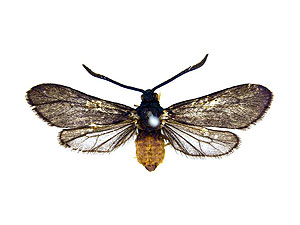Lauopa Snail (Lauopa mbalavuana)
This species, the only one in its genus, was described in 1983 based on material that had been collected in 1938 under logs and stones in a dense forest on a limestone hill on the island of Vanua Balavu, Fiji.
As far as I know only two specimens were ever found and both of them appeared to have rather been in a subfossil state; this species almost certainly is extinct. [1]
*********************
References:
[1] Alan Solem: Endodontoid land snails from Pacific Islands (Mollusca: Pulmonata: Sigmurethra). Part II, Families Punctidae and Charopidae, Zoogeography. Field Museum of Natural History Chicago, Illinois 1983
*********************
edited: 21.08.2022



